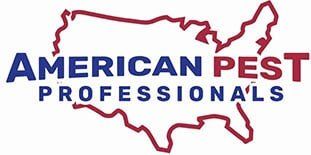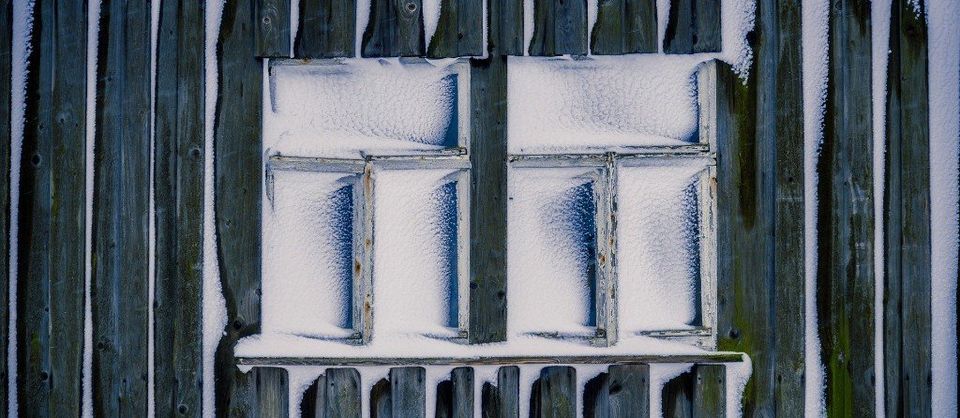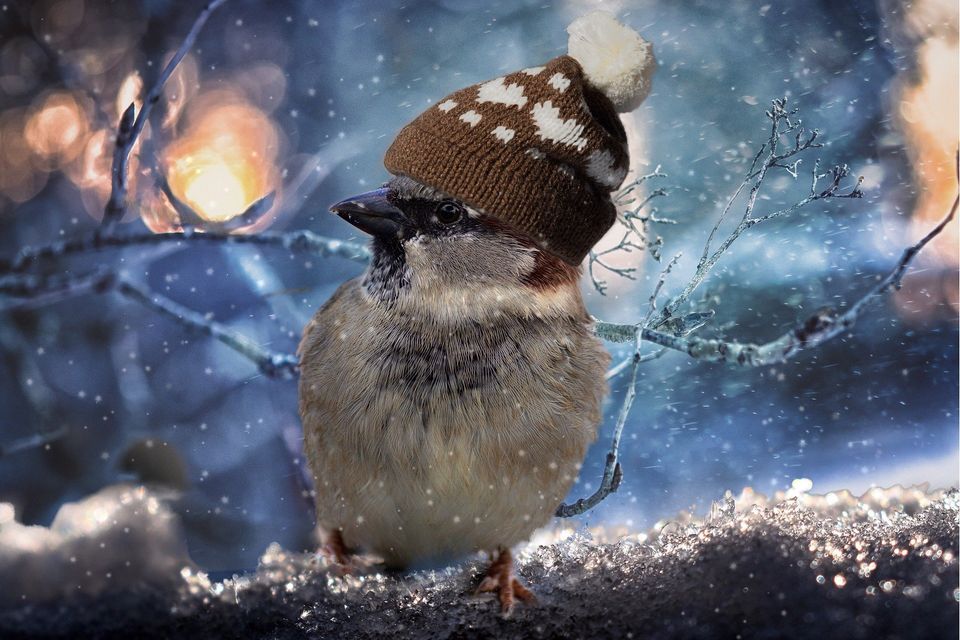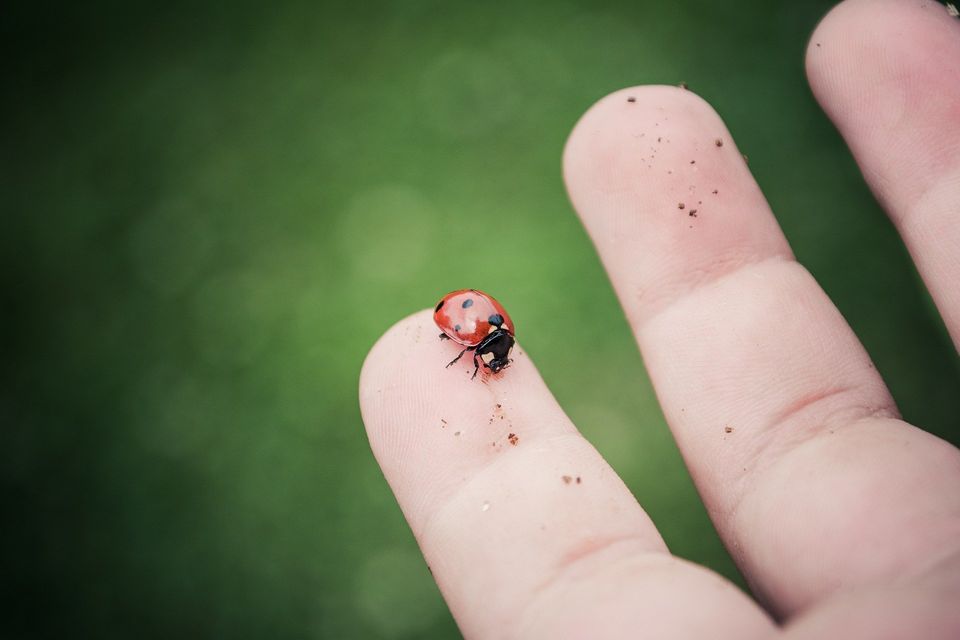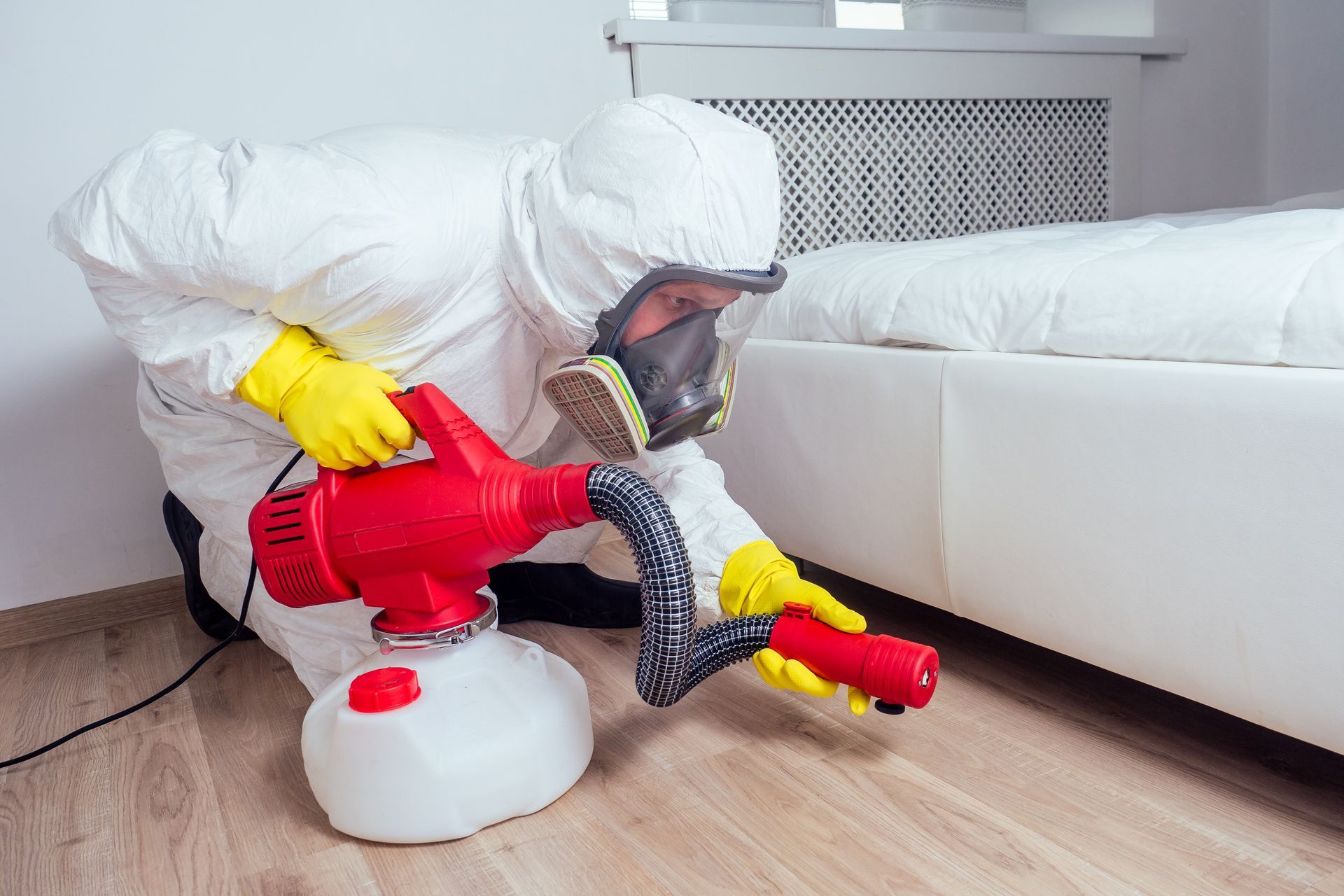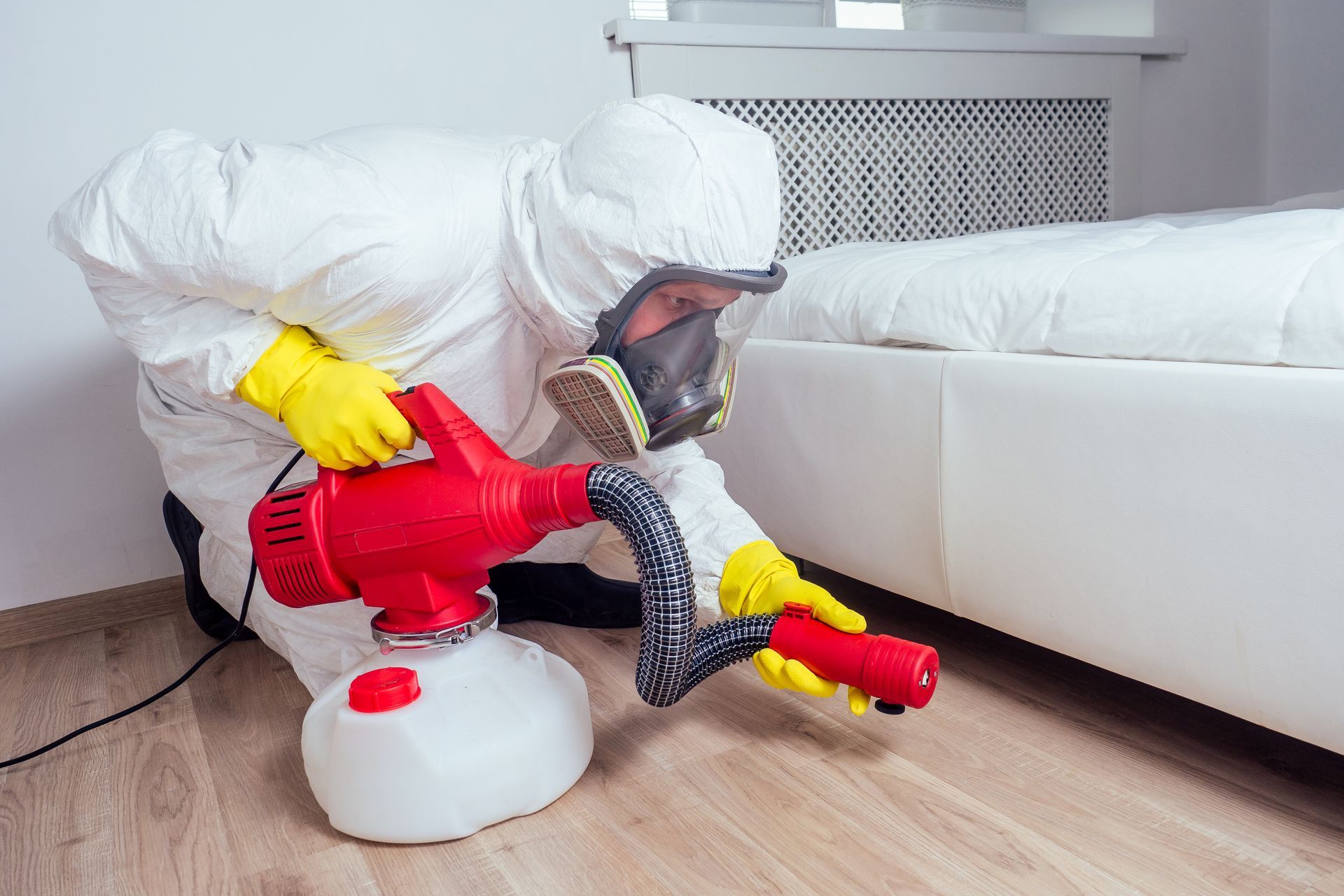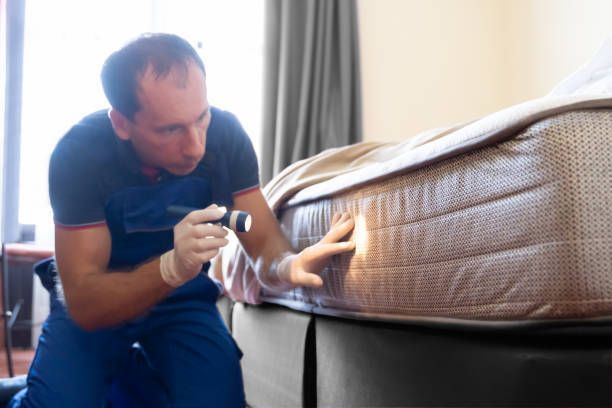How to Prevent & Identify 6 Common Winter Pests
When December hits the Midwest, temperatures plummet and snow can accumulate in shocking quantities. Gone are the days of poolside fun and cozy nighttime campfires. And when a winter pest invades your home, you may even miss the summer nights when mosquitoes buzzed incessantly and left you itching for days.
Before you find yourself reminiscing about the not-so-good days gone by, learn what prevention steps you can take to winterize your home against pests, and how to spot them if they do make themselves welcome.
Learn to Prevent These 9 Winter Pests from Invading Your Home
1. Mice & Rats
These furry friends enter homes in the winter to seek warmth, but have a tendency to chew through drywall and wires, which could spark an electrical fire. Rats will even chew threw items like plastic or lead pipes to access food or water. Mice and rats are also common culprits of contaminating food and spreading diseases such as Salmonella, tapeworms, jaundice and cowpox virus.
Prevention:
- Seal cracks and holes on the outside of your home with caulk and steel wool. Mice can fit through spaces as small as a dime, and rats the size of a quarter.
- Clutter is a mouse and rat’s best friend. Keep storage areas as clean as possible, and boxes off the ground.
- Clean dirty dishes, take the trash out, and vacuum regularly.
Store food in airtight, plastic containers rather than cardboard.
Identification:
- Mouse droppings (i.e. mouse poo) — small, round, black granules
- Greasy rub marks — Rats often leave greasy-looking marks thanks to their oily fur
- Gnaw marks — Where there’s smoke, there’s fire. Or in this instance, where there are mouse droppings or rat rub marks, there are gnaw marks. If you find droppings, take a look in the nearby area to see if any walls or cords have been chewed on.
- Damaged food — Holes or gnaw marks on food boxes often indicate the presence of mice or rates. If you notice any, throw away the item and determine your removal strategy.
Removal:
Mouse and rat traps come in all sorts of varieties to fit your creepy-crawly tolerance and humanitarian desires.
Many people choose to call a professional from the get-go, but we definitely recommend this route if you think there may be an infestation.
2. Birds & Bats
These flying creatures often enter your home looking for warmth and get stuck in spaces like attics and chimneys.
Prevention:
- Equip chimneys with caps or mesh covers.
- Seal cracks and holes on the outside of your home with caulk and steel wool.
- Keep doors and windows shut as much as possible and use screens on windows when they are open.
Identification:
- Chirping — birds and bats make chirping sounds that, if heard in your house, is an obvious indication of their presence.
- Bat droppings — bat poo produces a toxic smell similar to ammonia, so if you smell it in or around your house, you could have a bat problem.
- Scratches on the wall — bats and birds often leave scratches on the wall as they are flying about. You may also hear a scurrying type sound in your wall, which could indicate a bird, bat or larger animal has taken up residence in your home.
Removal:
- If a bird or bat is simply stuck in a space, try closing off all entry/exit points except one and leaving it open for an extended period of time so that the animal can find its way out.
- In most states, bats are a protected species so it is illegal to kill them. Mothballs contain the chemical naphthalene, which has been approved to use on bats in some states. Check your state’s regulations online.
- Natural repellents include cinnamon, human hair, peppermint, green tea, eucalyptus and menthol
- There are many factors to consider when removing bats from the home, such as if there are any young present or diseases they may carry. For this reason, we strongly recommend contacting a professional to help remove bats from your home.
3. Cockroaches
Roaches are a common household pest threat, with
German cockroaches being the among the world’s most common. They prefer small, moist areas close to food and water, making kitchens and bathrooms their perfect lair. They often make it inside by hitchhiking on grocery bags or boxes and are a nuisance because they can contaminate food, spread bacteria and trigger allergy symptoms, especially in children.
Prevention:
- Keep bathroom and kitchen counters clean and crumb-free.
- Vacuum often and take out the garbage regularly.
- Check pipes routinely for leaks and remove any obstructions in pipes to prevent bursts and leaks. You should also seal around pipes where they enter the home.
- Keep gutters clean.
- Store food (including pet food) in airtight, plastic containers.
- Don’t leave dirty dishes in the sink.
- Take out the trash and vacuum regularly. Incorporate cleaning under sinks, in stoves and under/behind large appliances into your cleaning as well.
Identification:
- Droppings — Roach droppings look like ground pepper or coffee grounds. Didn’t leave pepper or coffee on the floor or counter? You probably have roaches.
- Oily/Musty smell — cockroaches give off an oily, musty-like smell that can indicate their presence in your home.
- Skin or dead cockroaches — a dead roach or skin of one is a huge indicator that you have a cockroach problem.
Removal:
- Mix one part sugar and one part baking soda and leave out on a plate with water nearby. The roaches will be attracted to the sugar, but when they eat the mixture (and consume water), their stomachs will explode.
- You can also use chemical roach-killing sprays. Just be sure to clean up their remains promptly, especially if pets are present in the house.
- A professional is often the preferred way to go when dealing with a roach infestation.
4. Bedbugs
Bedbugs are everywhere and are excellent at hitching a ride into your home via clothing, luggage and purses.
Prevention:
- Examine hotel headboards, mattresses and box springs for dark blood spots as well as actual bedbugs. And be sure to check luggage and wash everything after traveling. Bedbugs have been found on airplanes and in hotels, so travel can be a major source of this pest.
- Hang clothing to minimize the chances of them spreading into clothes. Don’t leave clothing on the bed or other furniture.
- Use a mattress cover that encloses both the mattress and box spring.
- Vacuum often.
- Wash and dry bedding on high heat.
Identification:
- Bites — when bedbugs bite, they produce flat or raised, usually itchy red welts.
- Red or rust-colored stains — when bedbugs are crushed, they often leave behind a stain of blood.
- Fecal matter — bedbug poo looks more like marks left by a felt-tip pen than “droppings.”
- Musty smell — bedbugs emit a musty smell when they panic, so when they’re disturbed (like when you sleep), you’ll likely get a whiff.
Removal:
- Wash and dry bedding on high heat.
- Scrub mattress seams with a brush to loosen any eggs, and then vacuum.
- Call a professional... bedbugs can be tricky to spot and get rid of, so a professional is your best bet, especially if home remedies haven’t helped.
5. Stinkbugs, Ladybugs & other overwintering pests
Overwintering pests — those that essentially hibernate to survive cold winter temps — enter your home in the fall in preparation for winter nesting.
Prevention:
- Seal cracks that could leave your home exposed, especially on the southern and western walls.
- Be sure that windows and doors close tightly.
- Foundation and attic vents are great entry points for these tiny creatures. Install insect screening to minimize their access.
- Be wary of pumpkins in the fall months leading up to winter. Stinkbugs in particular love pumpkin juice.
Identification:
- With these pests, seeing is believing. You’ll see them most on the west side of your home, where they can get a nice sunbath in the afternoons.
Removal:
- You can use a vacuum to remove these pests if they do make it into your home. Empty or discard the bag immediately.
- Some overwintering pest problems can be overwhelming. Call a professional for removal and help preventing them from returning.
6. Raccoons & Squirrels
Raccoons may be cute, but they are a major host of rabies in the US, so they’re worth mentioning for your winter pest prevention checklist. Coons and squirrels sometimes enter human homes — most often in the eastern parts of the US where there are lots of woods — through attics or chimneys when they are searching for a comfortable place to live.
Prevention:
- Store trash and recycling bins in sealed areas like a garage or shed and use animal-proof lids.
- Examine the outside of your home for areas of entry like broken vent covers or loose siding or roof shingles.
- Install a mesh covers over chimneys and keep tree branches trimmed back from the house.
Identification:
- Noise — Raccoons and squirrels are not quite animals. You’ll hear them thumping around pretty immediately upon their arrival.
- Debris — Both coons and squirrels will bring in items to build nests. Raccoons will also bring in old food, leaving trash lying around.
- Roof damage — If a raccoon really wants in and can’t quite access an entry point, they may find a vulnerable spot and make one. Check your roof, siding and vents for damage.
Removal:
- Raccoons and squirrels are hard to catch and often carry disease. It is best to contact a professional who can remove the pesky animal in a humane way.
The key takeaways here? Cleanliness is key… Vacuum, clean the dishes and take the trash out regularly to help prevent pests from entering your home in the winter and other seasons. And never hesitate to call a professional to help you identify pest infestations and take care of them safely and humanely.
Questions? Leave ‘em in the comments and we’ll get you an answer to your pest predicament!
